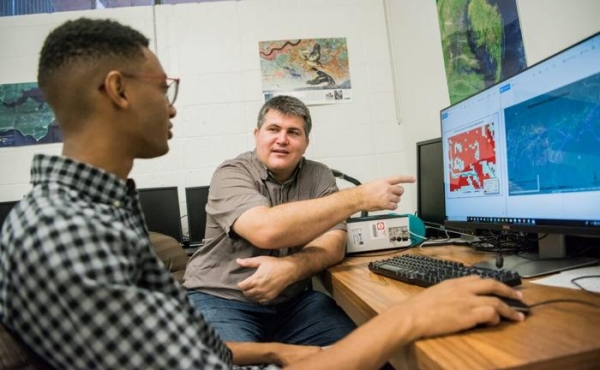A new study in Nature finds that up to 215 million hectares of land (an area larger than Mexico) in humid tropical regions around the world has the potential to naturally regrow. That much forest could store 23.4 gigatons of carbon over 30 years and also significantly help enhance biodiversity and water quality. The study showed that more than half of the area with strong potential for regrowth was in five countries: Brazil, Mexico, Indonesia, China, and Colombia.
“Tree planting in degraded landscapes can be costly. By leveraging natural regeneration techniques, nations can meet their restoration goals cost effectively,” says the study’s co-lead author, Brooke Williams, a researcher at the Queensland University of Technology, Australia, and the Institute for Capacity Exchange in Environmental Decisions. “Our model can guide where these savings can best be taken advantage of,” she says.
Read more at University of Maryland Baltimore County
Image: Joshua Slaughter (left) and Matthew Fagan discuss a map of forest patches in Costa Rica. A global map of potential natural forest regrowth areas developed in a new Nature study led by Brooke Williams and Hawthorne Beyer and based on a global forest patch database developed by Fagan suggests that an area larger than the size of Mexico in the tropics has the potential to regrow and store 23.4 gigatons of carbon. (Credit: Marlayna Demond/UMBC)
Sci/Tech Climate Top Stories
